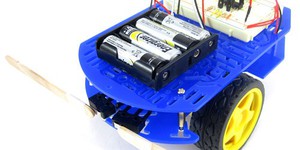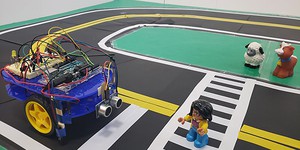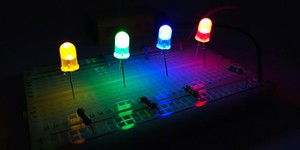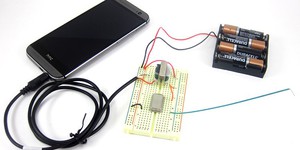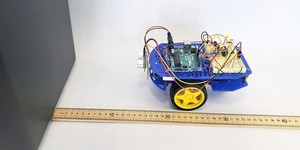Others Like “Linear vs. Logarithmic Changes: What Works Best for Human Senses?” (top 20 results)
|
Light sensors are part of many devices that we use every day. For example, they help your phone know when to automatically brighten or dim the screen based on ambient light levels. They can also be used to help solar panels track the sun, which helps the panels generate more power. Many spacecraft and planetary rovers are solar-powered. In this project you will build and program your own solar-tracking robot. Optionally, you can add solar panels and rechargeable batteries. Can your robot keep…
Read more
In the animal kingdom, many different critters use whiskers to help them find their way around in the dark, through murky waters, or even to help them hunt prey. Whiskers can be very useful when the animals cannot rely on sight. Did you know that you can also build a robot that uses "whiskers" to find its way around? This project will show you how to build a simple robot that uses whiskers as "bump sensors" to help the robot detect when it is about to bump into an obstacle, so it can turn…
Read more
Have you ever accidentally burned out an LED while building a circuit? What about doing it on purpose—for science, of course! In this science project, you will intentionally send too much current through LEDs to see if they will burn out or even explode! How much current does it take to destroy an LED? How does this compare to the LED's rated current value? Try this project and find out! Check out this page for more LED science projects.
Read more
How do self-driving cars stay on the road? How do vehicles with autonomous or driver-assist features automatically brake, steer around obstacles, or perform tasks like adaptive cruise control? Experiment with these behaviors and more in this science project as you build and program your own autonomous Arduino robot.
Read more
LED lighting can add a cool ambient effect to a room, a device, or even the inside of a car. You may know that LED lights are more efficient than incandescent bulbs, but do you know how to design and build your own LED circuit? How would you minimize power consumption and maximize efficiency? In this project you will learn how to design and build your own LED circuits so you can add LED lighting effects wherever you want. Check out this page for more LED science projects.
Read more
Do you have trouble remembering when to stop playing and clean up? Have you ever had little kids throw a tantrum about cleaning up while you were babysitting? If so, this project is for you! You will convert a stuffed animal into a light-up activity timer. You can use the timer for different activities like play, exercise, or doing homework. What you use it for is up to you!
Read more
Have you ever wondered how an AM radio station works? In this project you will learn the basics of how your favorite songs are transmitted by a radio station, by building your own simple AM radio transmitter. You will learn the basics of how a transmitter works, and how you are able to tune to your favorite station and listen to music.
Read more
How fast can a human driver react and hit the brakes when there is an obstacle in the road? Can autonomous cars react more quickly and make the road safer for everyone? In this project you will build your own Arduino robot and test human braking versus automatic braking as the robot drives toward an obstacle at full speed.
Read more
You can see examples of parabolic reflectors in flashlights, car headlights, satellite TV antennas, and even on the sidelines at football games. How do these "dish" antennas work to gather signals? What is the best position for placing the detector for these antennas? In this project, you can use an LED and a simple photodetector to find out for yourself.
Read more
The practice of "belly breathing" has been linked to improve mood, relaxation, and even have physical benefits like lowering your heart rate when compared to chest breathing. However, most of the time, we do not think about breathing—our bodies do it automatically. How do you know if you are belly breathing instead of chest breathing? How can you practice and get better at it? In this project you will build your own device to provide visual feedback about how a person breathes, then see…
Read more
|
Explore Our Science Videos
Liquid Density Column – STEM Activity
Make a Paper Lantern STEM Activity
Vibration & Sound: Make Sprinkles Dance



